Hello to all GreenLine PLO viewers , Vasily Falco here! Today I'll be talking about the biggest mistakes beginners make when transitioning to five-card Omaha.
Mistake #1: Ignoring PLO5's Peculiarities
To properly evaluate a hand, you need to consider all five cards. People who have played Hold'em or classic Omaha before believe that having two or three good cards in your hand already makes the starting hand playable. This is a serious misconception.
In five-card Omaha, the requirements for starting hand strength increase exponentially. They must be evaluated based on the following important criteria: rank, suits, and connectedness. Only the combination of these three factors makes a truly strong hand. Even pocket aces have a huge number of variations, and some are simply unplayable.
If we break it down by category, we see that double-suited hands are played much more often than their single-suited counterparts. For unpaired hands, the difference is threefold: 7% versus 25%.
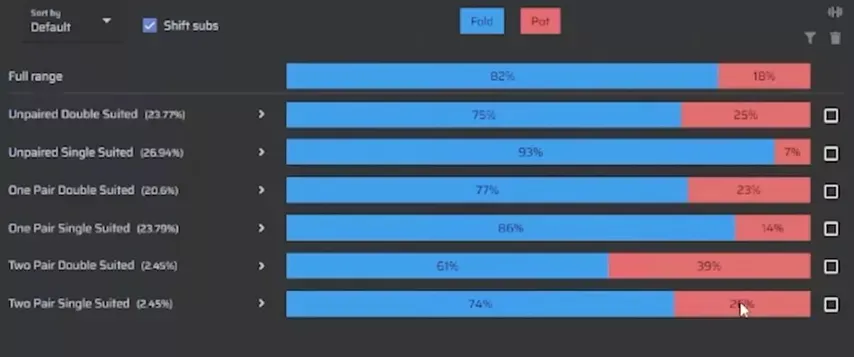 For single and double paired hands the difference is not as noticeable, but still significant, about 50%
For single and double paired hands the difference is not as noticeable, but still significant, about 50%Single-pair, single-suited hands are opened 14% of the time, while their double-suited versions are opened 23%. The same applies to connected hands. Take hands with pocket kings: only 33% of the time.
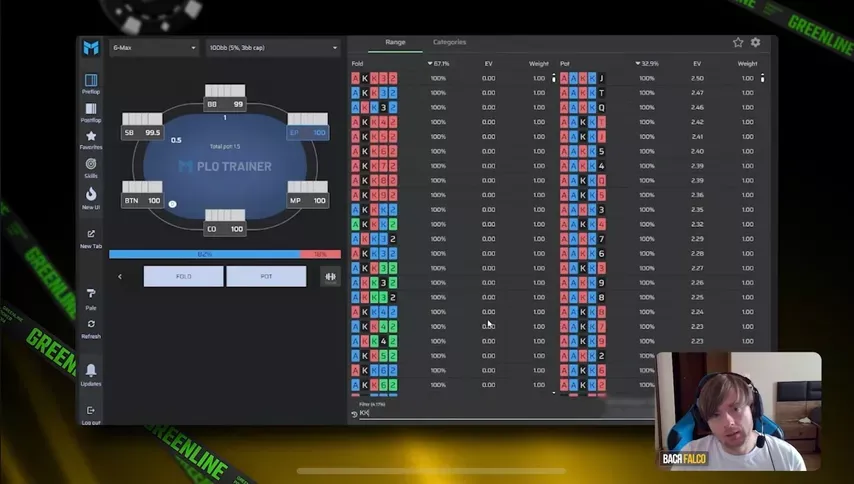
Beginners often look at two kings and think it's a super-strong hand. But without additional advantages, the hand isn't good enough even to raise from early position. The best hands with kings will always be two-suited or with another high pair, ideally aces.
If the other cards are bad, even a double-suited hand like KKT34 is always folded. The presence of deuces, threes, and fours really ruins the picture.
Don't try to evaluate a hand based on a single criterion. Look at the totality of all five starting cards. The absence of a second suit and/or connections, or the presence of "poisoned" cards, makes your hand less good, despite the kings.
Mistake #2: Overplaying Pocket Aces Preflop
The second mistake follows directly from the first. You see two aces, don't look at the rest of your cards, and decide to go easy on your stack. This can be very costly.
We showed aces from early position, got called by the button, and squeezed by the small blind. The solver immediately folds 5.6% of hands, and another 18.5% need to be called.

Let's take one hand from the pass, for example, Let's use a calculator to figure out what would happen if we 4-bet with this starting hand. The player on the button This is the worst-case scenario for us, but if our opponents understand preflop, then, unfortunately, it is quite likely.
The cold caller on the button has a huge equity advantage over both us and the small blind, even with a worse hand. We'll often overlap with the SB, and about 90% of his range consists of pocket aces that are better than ours. For example, .
In fact, giving him any suited aces won't improve our situation; we'll often be a huge underdog. Even with strong aces, we only have a 19.9% chance of winning preflop. Three-way pots will yield astronomical lose rates.
Don't fall in love with a hand preflop, even if it's aces.
Mistake #3: Not Folding to a 3-Bet
A common mistake that leads to dire consequences. Many have heard that preflop equity in PLO5 is close, so after a raise from UTG, a 3-bet from MP is almost always called. The logic is clear: the starter opened strong once, the equity is roughly equal, and you don't want to lose 3.5bb.
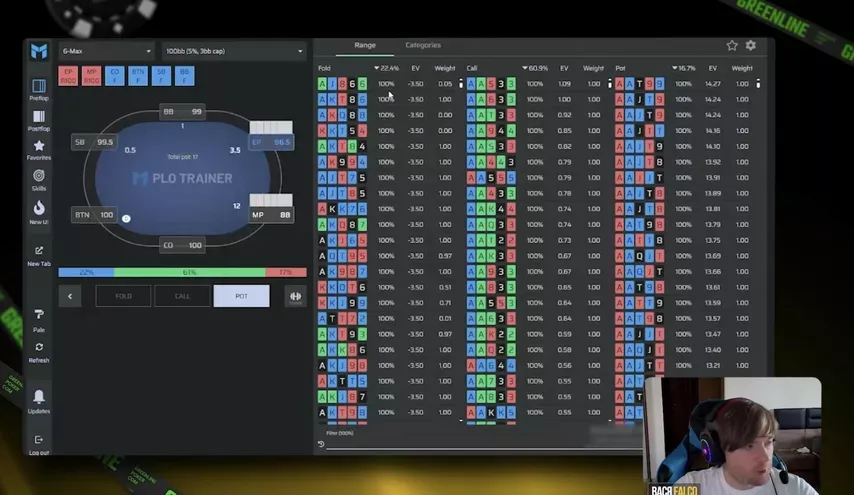
This is fundamentally wrong. The computer throws out 22.5% of the hands, including seemingly strong ones: with two suits or beautifully connected .
We need to evaluate the strength of our hand relative to our MP range. If our opponent plays adequately preflop, the 3-bet range will be very narrow, with many good ones in it. This range greatly blocks ours.
Another problem is realizing equity out of position, since we will be forced to rely on the opponent's actions and react to his decisions.
Life gets even more complicated if we flop a flush draw with a pocket pair. In a 3-bet pot, our range will often be dominated by nut flush draws, so must be thrown away.
A whopping 35% of hands with just one ace fold to a 3-bet. Even the most beautiful hands are folded. Otherwise, we'll make a lot of critical mistakes and end up in very unprofitable situations.
Mistake #4: Overestimating Your Hand Strength
Always remember that you can be dominated. Let's say we made a losing move: we opened from UTG. and called the 3-bet.
On the flop The opponent bets, and we decide that the equity for a stacked game is excellent: top pair, open-ended draw, and a second nut flush draw. In fact, against We have only 33%.
This happens quite often. In tight ranges, for example, UTG vs. MP, your opponent will have a lot of suited and connected aces. You shouldn't play big pots postflop with unsuitable hands: sometimes, of course, you'll get a coin flip, but more often than not, your range will be heavily dominated.
Mistake #5: Overplaying Hands in Multiway Pots
The more players there are in a hand, the more carefully we must choose which hands to continue with.
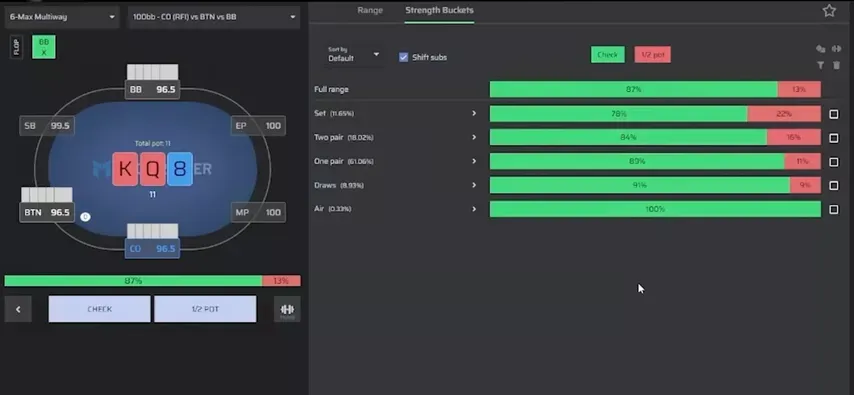
We opened from the cutoff and got called by the button and big blind. We only want to continuation bet 13% of the time; on this board texture, we don't have many strong hands relative to our opponents' ranges. Both ranges hit the board tightly.
There's no need to bet your entire range, as that would leave your checking range empty. We want to check or check-call some strong hands to see a safe turn and increase our hand equity.
Another option is a check-raise. We're out of position against the button and want to fully realize our equity. To do this, we need to minimize the SPR, and ideally, go all-in. The betting frequency here is extremely small.
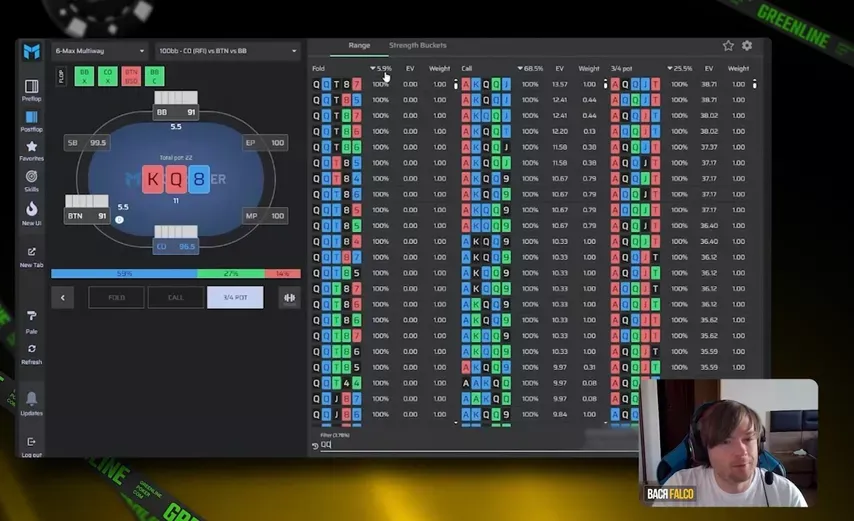
Let's consider another situation: we checked, the button bet, and the big blind called. In this case, we fold 59% of our range immediately, call 27%, and raise 14%. Even 6% of hands with a set of queens will fold. For example, if we have an eight, we block outs to a full house and a set of eights from our opponents.
With a set of queens, we want to see a blank turn 69% of the time, where our equity against our opponents' ranges will increase significantly. Our opponents' continuation range on this board will be full of flush draws and straight draws. If we get all-in on the flop, we won't always be favorites: the button still has a set of kings, and the big blind is also quite strong against us.
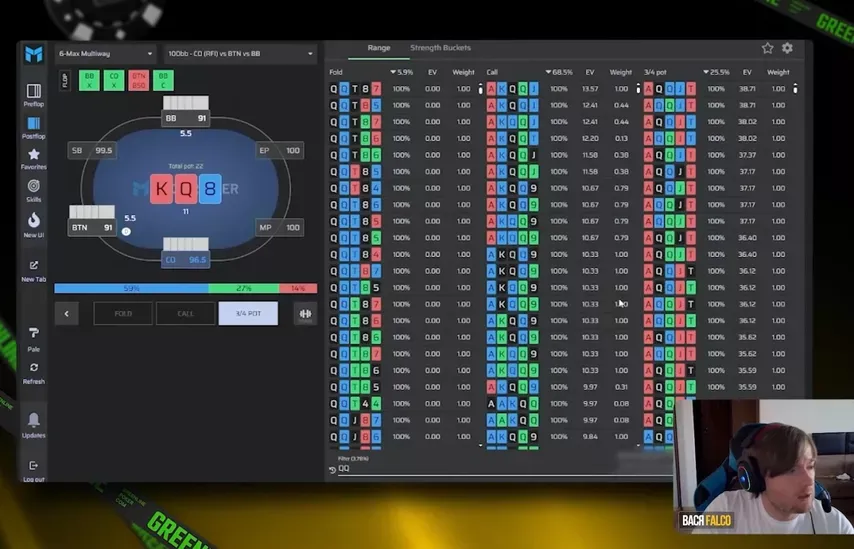
If we hit a blank turn, we can get it all-in much better. Only hands with extra equity are good for all-in: a set + wrap + nut flush draw. The EV will be sufficient even against a set of kings, and we'll simply destroy any other hands.
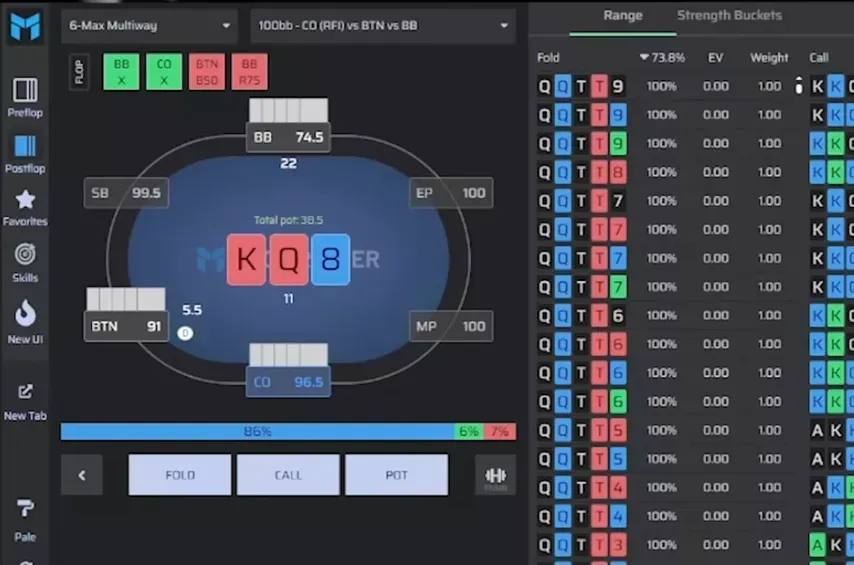
Another scenario is when the big blind raises. This may come as a shock, but we fold a whopping 74% of our sets.
Opponents' ranges are narrowing: the player in the big blind's range is skewed toward pocket kings, nut draws with open-ended draws, or wraps. Against him, we often don't have the extra equity with pocket queens, and then there's the button with all the strong hands in range. Ultimately, we're down to just 26% queens worth continuing with, and just 5% worth getting all-in with.
People often overplay their hands in these situations. Remember that as the number of opponents increases, the number of strong hands in their overall range increases.
You need to understand the relative strength of your hand. The extra equity provided by side cards is critical, especially in multiway hands.
PLO5 is not thriving on every site, but some poker rooms have become hubs for 5-card Pot Limit Omaha.
BetOnline, CoinPoker, and Phenom Poker all host the game. You'll have to hit peak hours for maximum tables, but there's action to be found for 5-card lovers.
You can improve your five-card Omaha skills for free.
GreenLine launched its PLO5 Junior program in October. Students receive group and individual coaching, access to a theoretical course taught by PL400-5000 regulars, and the best graduates will be invited to join the foundation.
There is a minimum selection process: you must have played at least 30,000 hands in the last three months at PL2 or higher, with any result. If you previously played Hold'em, you can show 50,000 profitable hands at NL2 or higher. Tournament players can submit their last 500 profitable MTTs at ABI $3+.
There's no backing or contract—you're free to choose your room, app, and limits: no restrictions! Hands are tracked.
